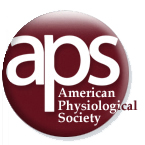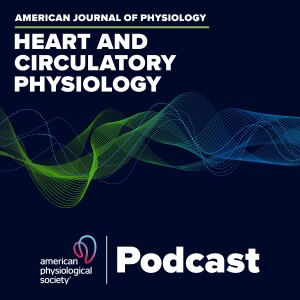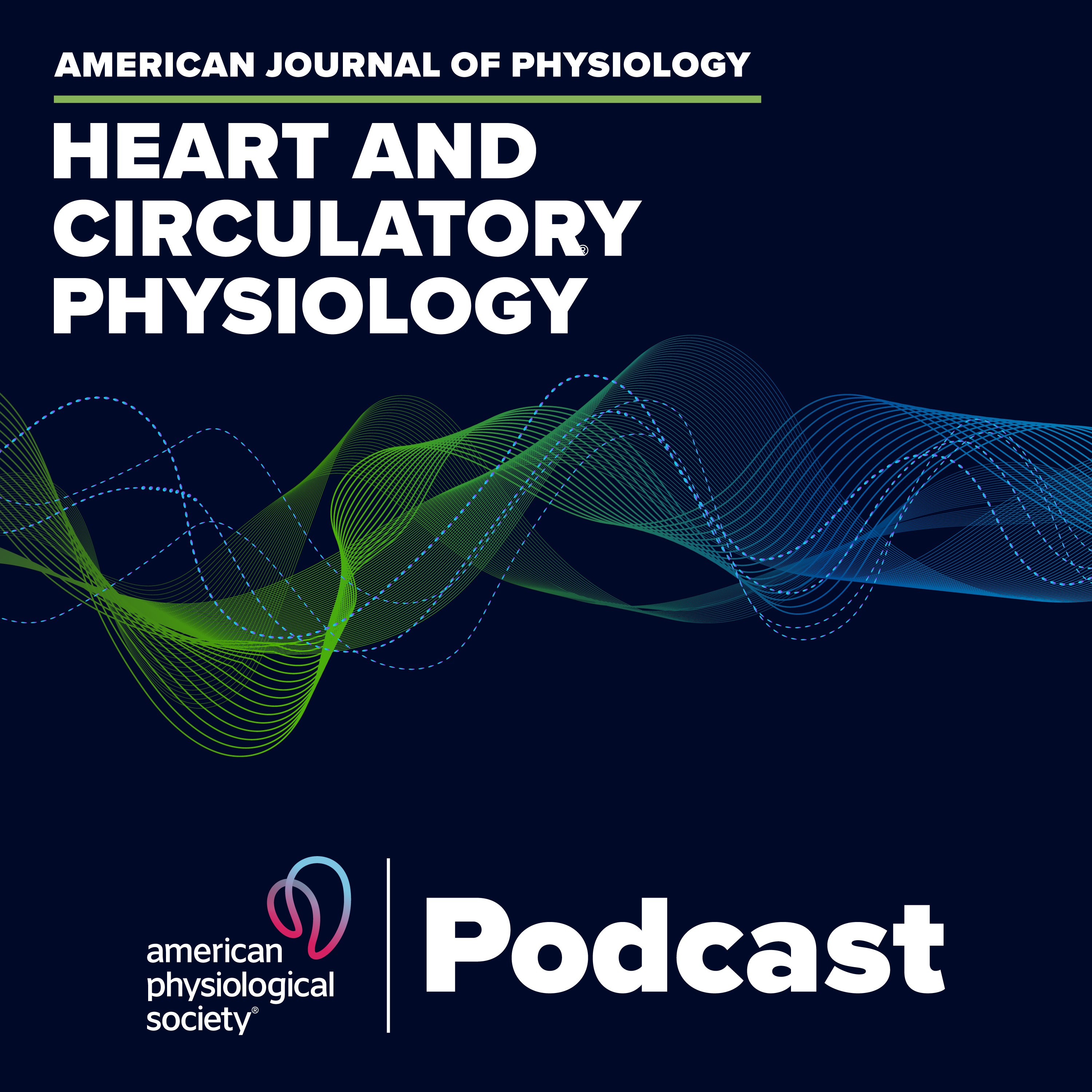Episodes

Thursday May 24, 2012
Age-related Changes in Central Blood Pressures
Thursday May 24, 2012
Thursday May 24, 2012
What happens when you combine NSAID type pain medication and aging-induced arterial stiffening? Can cyclooxygenase inhibitors cause hemodynamic problems in older adults? Editor-in-chief Bill Stanley interviews lead author Jill Barnes (Mayo Clinic) and expert Judy Delp (University of Florida) about the new human study by Barnes and colleagues which looked at the central blood pressure response to the COX inhibitor indomethacin in both old and young healthy adults.
Jill Nicole Barnes, Darren P. Casey, Caesy N. Hines, Wayne T. Nicholson, and Michael J. Joyner Cyclooxygenase Inhibition Augments Central Blood Pressure and Aortic Wave Reflection in Aging Humans Am J Physiol Heart Circ Physiol, published online April 13, 2012, doi: 10.1152/ajpheart.00032.2012.

Thursday May 17, 2012
Cytochrome P450 2C9 and Coronary Resistance Vessel Tone
Thursday May 17, 2012
Thursday May 17, 2012
Understanding the underlying mechanisms of increased coronary blood flow during exercise is the pursuit of many cardiovascular researchers worldwide. Here, Associate Editor Masafumi Kitakaze interviews lead author Dirk Duncker (Erasmus University Medical Center) and expert Masaru Sugimachi (National Cardiovascular Center, Osaka) about the new study by Zhou et al on the vasodilator and vasoconstrictor metabolites produced by cytochrome P-450 (CYP) 2C9 in pigs both at rest and during exercise. Listen in to learn how Duncker and colleagues used innovative in vivo and in vitro experimental conditions, achieving surprisingly different results related to the effects of sulfaphenazole in the presence of combined NOS/COX blockade.
Zhichao Zhou, Veemal Hemradj, Vincent J. de Beer, Fen Gao, Maaike Hoekstra, Daphne Merkus, and Dirk J. Duncker Cytochrome P-450 2C9 exerts a vasoconstrictor influence on coronary resistance vessels in swine at rest and during exercise Am J Physiol Heart Circ Physiol, published online February 3, 2012, doi:10.1152/ajpheart.00648.2011.

Wednesday May 02, 2012
Neuregulin1/ErbB4 Signaling and Cardiomyocyte Proliferation
Wednesday May 02, 2012
Wednesday May 02, 2012
How is cardiac neuregulin signaling involved after herceptin treatment of breast cancer patients? Our latest podcast explores the new Review article by Wadugu et al, which focuses on neuregulin signaling in the heart and dissects early observations that up to 30% of patients treated with herceptin for breast cancer displayed heart failure as a side-effect, likely by inhibiting neuregulin signaling. Cardiomyocyte proliferation is just one of many events triggered by neuregulin activation in heart cells, thereby opening a safe, paracrine possibility to stimulate myocyte proliferation in experimental and clinical heart failure studies. Listen as Associate Editor Leon de Windt talks with senior author Bernhard Kuhn (Children's Hospital Boston/Harvard Medical School) and leading expert Douglas Sawyer (Vanderbilt University) about stem cell treatments, clinical trials, and much more.
Brian Wadugu and Bernhard Kuhn. The role of neuregulin/ErbB2/ErbB4 signaling in the heart with special focus on effects on cardiomyocyte proliferation Am J Physiol Heart Circ Physiol, published ahead of print March 16, 2012, doi: 10.1152/ajpheart.00063.2012.

Tuesday Apr 24, 2012
O-GlcNAc Signaling During Hypertrophy
Tuesday Apr 24, 2012
Tuesday Apr 24, 2012
Does protein glycosylation drive cardiac hypertrophy? In our latest podcast, Editor in Chief William Stanley talks with senior author Steven P. Jones (University of Louisville) and leading expert John Chatham (University of Alabama at Birmingham) to discuss the work by Facundo et al that explores the role of O-GlcNAc in pathological cardiac hypertrophy through NFAT modification. Listen as they discuss the complexities and importance of O-GlcNAc signaling, and explore the methodological challenges in assessing protein O-GlcNAcylation. Is there a role in heart failure or diabetic cardiomyopathy? Listen in and find out.
Heberty T. Facundo, Robert E. Brainard, Lewis J Watson, Gladys A. Ngoh, Tariq Hamid, Sumanth D. Prabhu, and Steven P. Jones O-GlcNAc Signaling is Essential for NFAT-Mediated Transcriptional Reprogramming During Cardiomyocyte Hypertrophy Am J Physiol Heart Circ Physiol, published ahead of print March 9, 2012, doi: 10.1152/ajpheart.00775.2011.

Friday Apr 13, 2012
Mitochondrial Adaptations and Myocardial Energetics
Friday Apr 13, 2012
Friday Apr 13, 2012
The protective effect of ischemic preconditioning lasts for only a few hours, then reappears about a day later in what is termed the Second Window of Protection (SWOP). In this podcast Editor in Chief William Stanley interviews senior author Edward McFalls (VA Medical Center, University of Minnesota) and leading expert Nazareno Paolocci (Johns Hopkins University) about the work by Cabrera et al, which brings together an elegant animal model, cutting-edge proteomics technology, and clinical cardiologist and cardiovascular physiologist to uncover the role of the mitochondria and energetics in mediating SWOP.
Jesus A Cabrera, Elizabeth A Ziemba, Robert Colbert, Lorraine Anderson, Willem Sluiter, Dirk J. Duncker, Tammy A Butterick, Joseph Sikora, Herbert B Ward, Rosemary F Kelly, and Edward O McFalls. Altered Expression of Mitochondrial Electron Transport Proteins and Improved Myocardial Energetic State During Late Ischemic Preconditioning Am J Physiol Heart Circ Physiol, published ahead of print March 2, 2012, doi: 10.1152/ajpheart.00372.2011.

Thursday Apr 12, 2012
Photoplethysmography with Valsalva Maneuver Reflects Filling Pressure
Thursday Apr 12, 2012
Thursday Apr 12, 2012
What do Valsalva, the 17th century Italian physician, and smartphones have in common? Listen to our latest intriguing podcast which explores how the Valsalva Maneuver, when paired with finger photoplethysmography using a simple pulse oximetry probe, may provide cardiologists with an alternative to cardiac catheterization for heart failure patients. Associate Editor Ajay Shah interviews lead author Harry Silber (Johns Hopkins University) and expert Charles Chung (University of Arizona) about the work by Silber and colleagues, which knits together classical cardiovascular physiology, clinical cardiology, and inventive uses of existing technologies to provide insights into the left ventricular filling pressure of heart failure patients.
Harry A. Silber, Jeffrey C. Trost, Peter V. Johnston, W. Lowell Maughan, Nae-Yuh Wang, Edward K. Kasper, Thomas R. Aversano, and David E. Bush. Finger Photoplethysmography During the Valsalva Maneuver Reflects Left Ventricular Filling Pressure Am J Physiol Heart Circ Physiol, published ahead of print March 2, 2012, doi: 10.1152/ajpheart.00609.2011.

Tuesday Apr 03, 2012
Hemin toxicity and autophagy
Tuesday Apr 03, 2012
Tuesday Apr 03, 2012
We know that hemin toxicity effects vascular endothelial cells, which may contribute to cardiovascular diseases. But what is the underlying molecular mechanism? In our newest podcast, Associate Editor Christine des Rosiers interviews senior author Victor Darley-Usmar (University of Alabama at Birmingham) and leading expert Neil Hogg (Medical College of Wisconsin) about the connections between lipid peroxidation in cells and its damaging effects on mitochondrial function, and the role autophagy may play in protecting those mitochondria from damage.
Ashlee N. Higdon, Gloria A. Benavides, Balu K. Chacko, Xiaosen Ouyang, Michelle S. Johnson, Aimee Landar, Jianhua Zhang, Victor M. Darley-Usmar. Hemin causes mitochondrial dysfunction in endothelial cells through promoting lipid peroxidation: the protective role of autophagy Am J Physiol Heart Circ Physiol, published online April 1, 2012, doi: 10.1152/ajpheart.00584.2011.

Wednesday Mar 14, 2012
Nerve induced EC Ca2+ signals oppose vasoconstriction
Wednesday Mar 14, 2012
Wednesday Mar 14, 2012
Our latest podcast takes us into the realm of calcium pulsars. Associate Editor Nancy Kanagy talks with senior author Mark Nelson (University of Vermont) and leading expert Michael Hill (University of Missouri) about how the work of Nausch et al challenges the traditional view that the sympathetic nervous system regulates vascular tone independent of the endothelium. This work by Nelson and colleagues shows that the endothelium is dynamically engaged during neurovascular coupling through transcellular negative feedback which limits vasoconstriction. Listen as we explore how the vascular smooth muscle communicates with the endothelium, and the potential significance of this EDH mechanism to oppose sympathetically-mediated constriction.
Lydia W. M. Nausch, Adrian D. Bonev, Thomas J. Heppner, Yvonne Tallini, Michael I. Kotlikoff, Mark T. Nelson. Sympathetic nerve stimulation induces local endothelial Ca2+ signals to oppose vasoconstriction of mouse mesenteric arteries Am J Physiol Heart Circ Physiol, published ahead of print December 2, 2011, doi:10.1152/ajpheart.00773.2011.

Tuesday Feb 28, 2012
In pursuit of scientific excellence - sex matters
Tuesday Feb 28, 2012
Tuesday Feb 28, 2012
Sex and gender matter in physiology, but are frequently ignored in scientific publications. In our latest podcast, Editor in Chief William Stanley has a lively conversation with leading experts Virginia Miller (Mayo Clinic) and Jane Reckelhoff (University of Mississippi) about the importance of sex and gender differences in physiology research and publications. Clear sex differences are apparent at the molecular, cellular and whole organ levels, prompting a new editorial policy for the American Physiological Society publications which requires reporting of the sex and/or gender of animals and humans, as well as all derived materials. Learn about how to approach this important issue in your work, and the surprising effects of sex on physiology from the molecular level on up.
Virginia M. Miller. In pursuit of scientific excellence - sex matters Am J Physiol Heart Circ Physiol, published ahead of print February 10, 2012, doi: 10.1152/ajpheart.00073.2012.

Thursday Feb 09, 2012
Fructose diet-induced cardiomyocyte Ca2+ cycling abnormality
Thursday Feb 09, 2012
Thursday Feb 09, 2012
In our latest podcast we explore the cardiac-specific effects of a high fructose diet. An inventive new study by Mellor et al investigates excitation contraction coupling changes in myocytes isolated from an experimental mouse model. These studies reveal, upon high fructose feeding, marked alterations in myocyte Ca2+ handling, but with maintained contractile function. Associate Editor Meredith Bond and leading expert Susan Howlett (Dalhousie University) interview senior author Lea Delbridge (University of Melbourne) about her exciting new work on diabetic cardiomyopathy.
Kimberley M Mellor, Igor R Wendt, Rebecca H Ritchie, and Lea M.D. Delbridge. Fructose diet treatment in mice induces fundamental disturbance of cardiomyocyte Ca2+ handling and myofilament responsiveness Am J Physiol Heart Circ Physiol, published ahead of print December 23, 2011, doi:10.1152/ajpheart.00797.2011.

